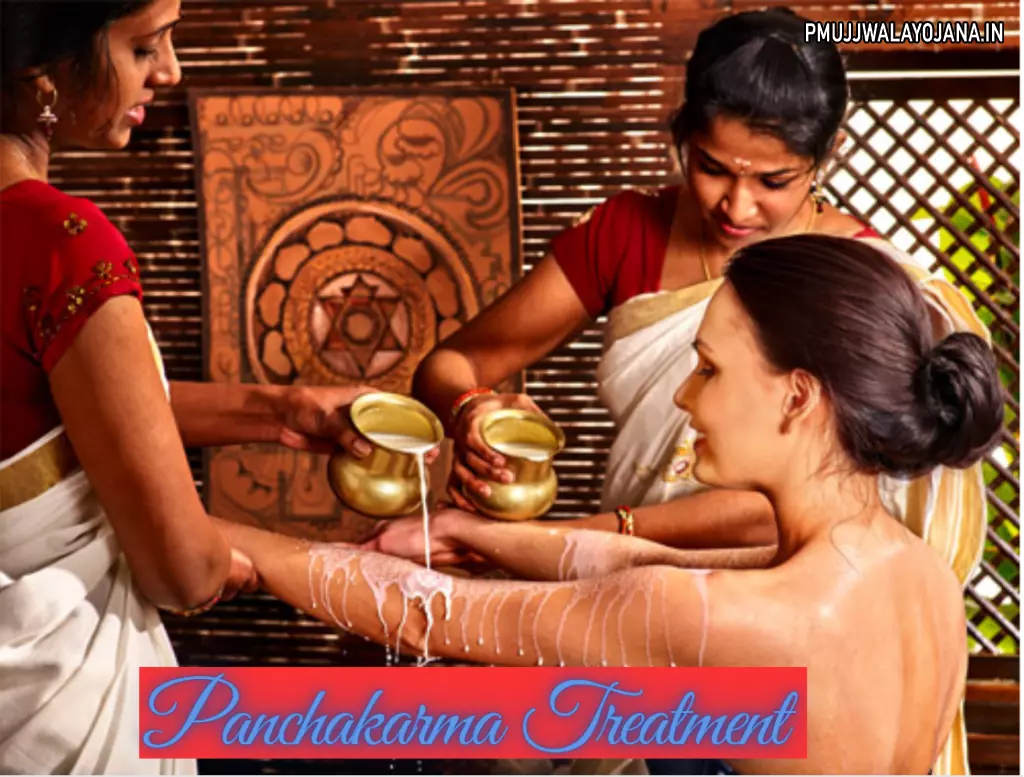Panchakarma Treatment is an Ayurvedic therapy that helps remove toxins from your body and restore good health. This treatment involves five main cleansing processes chosen by your doctor after reviewing your physical and mental health. The cleansing helps get rid of toxins in different ways.

Overview of Panchakarma Treatment
Panchakarma is a complete cleansing and rejuvenating process for your body, mind, and soul. In Ayurveda, every person is unique and made up of five elements: Earth, Fire, Water, Ether, and Air. These create three energies or doshas in your body called Pitta, Kapha, and Vata. When these doshas are out of balance, health problems can occur. Panchakarma is designed for each person based on their unique body type and health condition. It starts with pre-cleansing steps like Snehan (oil massage) and Svedana (steam treatment), followed by cleansing procedures called Shodanas.
Main Benefits of Panchakarma Treatment
Panchakarma therapy provides many health benefits, including:
- Helps clean the body and mind of stored toxins and pollutants.
- Improves the function of the lymphatic, nervous, heart, respiratory, reproductive, hormone, and digestive systems.
- Supports balancing your doshas to bring back good health.
- Strengthens your immune system to protect against diseases.
- Slows down aging effects and refreshes your body.
- Calms your mind and body, helping to reduce stress.
Ayurvedic Basics of Panchakarma
Ayurveda is more than medicine; it is about living well and preventing illness. It guides you to choose the right foods, lifestyle, and exercises to keep your body, mind, and soul in balance. The five basic elements of Ayurveda are Earth, Air, Fire, Water, and Ether. These combine to form three doshas (Vata, Pitta, Kapha), which determine your body type and health. These doshas shape your unique physical and mental makeup from conception.
There are seven main body types based on dosha balance: Vata, Pitta, Kapha, or combinations such as Vata-Pitta, Pitta-Kapha, Kapha-Vata, and a balanced mix of all three.
The Five Panchakarma Ayurvedic Treatments
Panchakarma means five actions or treatments. Here are the five main ones:
- Vamana: This therapy helps induce vomiting to remove extra mucus and toxins. It is mainly used for stomach and breathing issues.
- Virechana: Uses herbal medicines to increase bowel movements and clear toxins. It helps keep hormones balanced and removes harmful buildup.
- Rakta Moksha: This involves bloodletting using leeches to treat blood and skin problems. Note, this treatment is not offered here.
- Basti: Enemas are given to clean the colon of toxins. Used to treat constipation, piles, and digestion problems.
- Nasya: Nasal drops or sprays clear toxins from sinuses and breathing passages to relieve sinus problems, allergies, and headaches.
Preparing Your Body: Purvakarma
Before the main cleansing, your body needs preparation to help push out toxins. This is done with two treatments:
- Snehan: Massaging your body with oil helps move toxins into your digestive system. It softens tissues and supports nervous system health. This massage is done once daily for 3 to 7 days.
- Svedana: Steam therapy causes sweating which liquefies toxins and makes them easier to remove. Herbal medicines may be added to the steam. This is done daily right after Snehan.
14 Interesting Facts About India
Diet and Lifestyle Tips during Panchakarma
During Panchakarma, Ayurveda recommends simple diet and lifestyle rules to support your healing:
- Rest well and avoid heavy exercise, late nights, loud noise, TV, and sexual activity.
- Keep yourself warm and avoid cold air or wind.
- Avoid cold drinks, cold foods, caffeine, white sugar, alcohol, recreational drugs, and dairy.
- Follow a simple diet of kitchari (a lentil and rice dish) and ghee (clarified butter).
This helps keep your digestive fire (agni) calm as toxins move out during cleansing. Avoid these banned foods until Panchakarma is complete.
After Panchakarma
Once cleansing is done, the focus moves to renewing and strengthening your body and mind. This can be done by eating a balanced diet, practicing yoga, getting oil massages (abhyanga), and meditating. These steps help you return to normal life feeling healthy and refreshed.